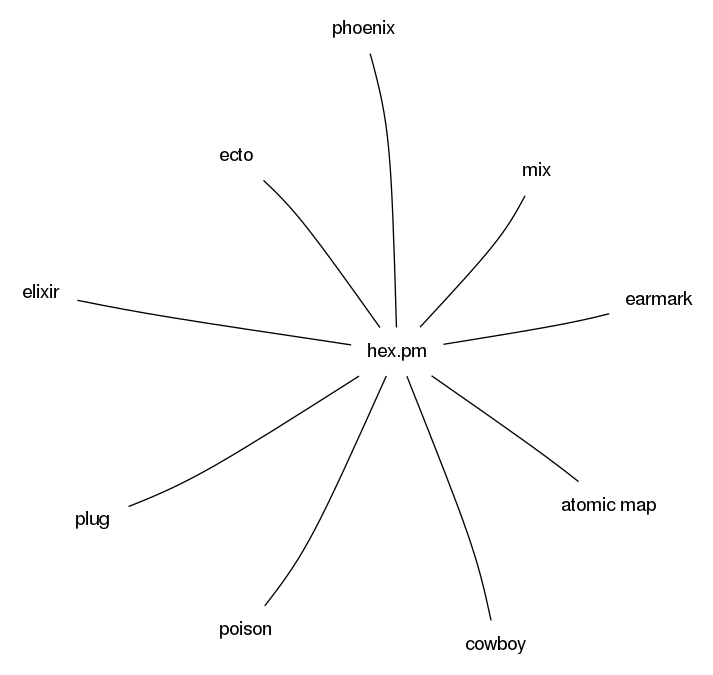dev notes
software development craftsmanship
2020-05-11
brain
When you develop software, you also have to look up things frequently. This can be a Google search, or a confluence / jira lookup, read a blog post or a news article. During your look up you connect informations.
The more information is linked, the better you can remember it. This is how our brain is working.
If you have a similar problem a few months later, you repeat your look up. Maybe you can remember some steps, but not all of them.
This is where brain and memories comes into play.
I start with an example to demonstrate this.
If I want do lookup hex.pm in my memories, I get a result with

I can see there is a connection to phoenix, so I can lookup phoenix as well.

Ok, there is a connection to gdscript.

Now you have left the elixir space, and have entered the game engine space. This is helping, when you want to think outside the box.
Every time you lookup something, you get a more or less dense overview about a topic.
If you are searching for example for package,

the result will contain more matches, but you can narrow it down more easily. As you can see there are islands of memories, which are not connected til now.
If you want to make a connection you have to start a research again.
how does this works
The basis for this are adjacency lists. In my prototype, I use markdown documents like
```
id: bfb53060-3b64-11ea-855e-872de3eb04d1
title: elixir
links:
- 1c4ddc26-3b6c-11ea-8a1f-d3bd2d7b8f9d
- 7425e5ec-3b6c-11ea-ab66-339bddb9d6ee
- 1fbb1e40-3b6d-11ea-a667-77559ebd764b
tags:
- elixir
```
BEAM based functional language.
The first comment section is used for metadata.
The id is uniq for every memory, so it can be referenced within other memories.
You can reference other memories via links.
You can also use tags, if you only want to find tagged memories.
A search will find all memories, containing a search string, and their next links.
My first experiences with this full text search looks promissing.
You can configure multiple paths for your memories, so you can have own memories and for example company memories which are only used for work.
So you can merge multiple sets of memories into one big memory.
Currently the markdown documents are created with a texteditor.
I am playing arount with ideas, to build a propper frontend for brain
If you like to know more about this, you can take a look at the sources for brain and memories.